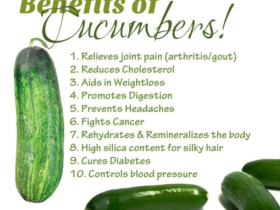Sustainable Seafood: A Dive into Ethical Eating
Picture this: the aroma of sizzling garlic butter dances around you, mingling with the intoxicating scent of the sea. Your knife glides through a perfectly caramelized tuna steak, revealing a blush of pink perfection within. Each bite ignites a symphony of flavors – the briny kiss of the ocean, the earthy warmth of spices, the tender succulence of expertly cooked flesh. It’s culinary nirvana, a moment where your taste buds travel to the heart of the ocean, savoring its pristine bounty.
But wait, a shadow whispers its way into this idyllic feast. A niggling pang of guilt arises, a question that tugs at the edge of your pleasure: is this indulgence sustainable? Is the fleeting delight on your plate worth the potential cost to the ocean’s fragile ecosystems, the very source of its magic?
Fear not, ocean-loving gourmands, for there’s a way to navigate this ethical quandary without sacrificing flavor or culinary adventure. Enter the realm of sustainable seafood: a movement fueled by passion for both the plate and the planet. It’s a conscious choice, a commitment to enjoying the ocean’s gifts while ensuring its health and abundance for generations to come.
Imagine your perfect tuna steak, now adorned with an invisible badge of honor – one that whispers of responsibly managed fisheries, of fishing gear designed to protect vulnerable marine life, of quotas meticulously calculated to ensure the ocean’s future bounty. This is the essence of sustainable seafood: a delicious symphony orchestrated in harmony with nature’s rhythm.
It’s about diving deeper, beyond the supermarket counter, to seek out seafood with traceable origins, certified by recognized bodies like the Marine Stewardship Council (MSC) or the Aquaculture Stewardship Council (ASC). It’s about embracing seasonality, savoring the fleeting sweetness of summer sardines or the rich warmth of winter cod, harvested at the peak of their natural abundance.
It’s about venturing beyond the usual suspects, exploring underexploited species like pollock or mackerel, just as delicious and far less burdened by the weight of overfishing.
Sustainable seafood isn’t just a buzzword, it’s a revolution on your plate. It’s a way to indulge in the ocean’s wonders without burdening its future. So, the next time you crave a taste of the sea, dive into the world of sustainable seafood. Let your palate and your conscience dance in tandem, savoring the ocean’s bounty with joy and responsibility.
Remember, every conscious choice ripples through the vast expanse of the sea, shaping a future where our love for seafood fuels its sustainable existence.

Why Dive into Sustainable Seafood?
Think of our oceans as a majestic underwater banquet. Overfishing, however, is like raiding the buffet without a care for leftovers. We’re depleting fish populations at an alarming rate, threatening entire ecosystems and the livelihoods of communities dependent on them. Sustainable seafood flips the script, ensuring we feast without jeopardizing the future of this ocean bounty.
But how do we navigate this murky water? Fear not, intrepid epicureans, for this guide will be your trusty compass. We’ll delve into the murky depths of seafood sourcing, equipping you with the knowledge to make informed choices that please your palate and the planet.
Charting the Course: Understanding Sustainable Practices
1. Wild vs. Farmed: The age-old debate. Wild-caught seafood carries the romantic allure of the open sea, but unregulated fishing practices can wreak havoc. Enter sustainable aquaculture, where responsible fish farming minimizes environmental impact and ensures healthy fish populations. Look for certifications like the Aquaculture Stewardship Council (ASC) to navigate this choice.
2. Fishing Gear Matters: Imagine casting a net so wide it snags dolphins along with tuna. Scary, right? That’s why selective fishing gear is crucial. Lines, traps, and pots that target specific species minimize bycatch, protecting vulnerable marine life.
3. Quotas, not Greed: Picture a fish population as a bank account. Overfishing is like reckless spending, leaving nothing for tomorrow. Sustainable fisheries operate within scientifically determined quotas, ensuring future generations can enjoy the ocean’s bounty.
4. Traceability: Know Your Catch: Ever wondered where your fish took its last swim? Traceability shines a light on the seafood journey, from ocean to plate. Look for labels with detailed information about origin, fishing methods, and certifications.
:max_bytes(150000):strip_icc()/aspreadofseafood-daaf0a8e6fa142fbbffe89a178608ca3.jpg)
Navigating the Supermarket Seas: Practical Tips for Savvy Shoppers
Armed with this knowledge, let’s conquer the seafood aisle! Here are some practical tips:
- Befriend the fishmonger: Chat with your local fishmonger. They’re often a wealth of knowledge about sustainable options and local catches.
- Seek the eco-labels: Look for certifications like the Marine Stewardship Council (MSC) and ASC. These symbols are your green flags in the seafood market.
- Seasonality is your friend: Just like fresh produce, seasonal seafood tastes best and often comes from sustainable fisheries. Think summer sardines or winter cod.
- Variety is the spice of (sustainable) life: Don’t stick to tuna and salmon. Explore lesser-known, underexploited species like pollock or mackerel. They’re often delicious and more sustainable choices.
- Embrace the bivalves: Mussels, oysters, and clams are ocean floor superstars! They filter water, clean ecosystems, and are incredibly sustainable to harvest.
Beyond the Plate: Expanding Your Sustainable Seascape
Remember, our impact on the ocean extends beyond our meal choices. Here are some additional ways to be a champion for sustainable seafood:
- Support restaurants with sustainable menus: Your dining dollars speak volumes. Choose restaurants committed to ethical sourcing.
- Advocate for ocean conservation: Let your voice be heard! Support organizations working to protect marine ecosystems and promote sustainable fishing practices.
- Reduce your seafood footprint: Every little bit counts. Consider meatless Mondays or opting for smaller portions.

The Final Cast: A Feast for the Future
By embracing sustainable seafood, we celebrate the ocean’s bounty while safeguarding its future. We become responsible stewards, ensuring the delicate dance of marine life continues for generations to come. So, next time you crave a taste of the sea, dive into the world of sustainable seafood. Your taste buds and the planet will thank you.
Frequently Asked Questions
Is all seafood sustainable?
Unfortunately, not all seafood is created equal. While some fisheries are demonstrably sustainable, others pose threats to ocean health. By following the tips in this guide and opting for certified sustainable options, you can make informed choices that support responsible practices.
Does sustainable seafood cost more?
While sustainable seafood can sometimes carry a slightly higher price tag, it’s an investment in the future of our oceans. Remember, the true cost of unsustainable practices goes far beyond the price at the counter.
I live far from the coast. Can I still make sustainable choices?
Absolutely! Distance needn’t be a barrier to sustainable seafood choices. Here’s how you can make a splash even if you’re miles from the shore:
Befriend your local freezer: Frozen seafood can be just as delicious and sustainable as fresh, often sourced from responsibly managed fisheries that flash-freeze their catches at sea. Look for MSC or ASC certifications on frozen options, and remember, freezing preserves nutrients and flavor beautifully.
Get to know your fishmonger (even virtually): Many fishmongers now offer online ordering and delivery, bringing the ocean’s bounty right to your doorstep. Don’t hesitate to ask about their sourcing practices and certifications. You might even be surprised by the variety of sustainable options they offer.
Support community-supported fisheries (CSFs): CSFs connect consumers directly with fishermen, eliminating middlemen and promoting sustainable practices. By subscribing to a CSF, you’ll receive a regular haul of fresh, seasonal seafood, often straight from the boat to your plate.
Embrace tinned treasures: Canned seafood, often overlooked, is a hidden gem in the sustainable seafood world. Tuna, sardines, and salmon packed in water or olive oil are great pantry staples, perfect for quick and healthy meals. Look for brands committed to sustainable fishing and responsible packaging.
Think outside the fin: Seafood isn’t limited to fish! Explore delicious and sustainable options like mussels, clams, oysters, and seaweed. These shellfish have minimal environmental impact and are packed with nutrients.
Remember, every choice counts. By incorporating these tips into your routine, you can make a positive impact on the ocean’s health, even if you’re never seen the coast. So, dive into the world of sustainable seafood, no matter where you live, and savor the delicious rewards of ethical eating!
Bonus Tip: Get creative in the kitchen! Sustainable seafood opens up a world of culinary possibilities. Try new recipes, experiment with flavors, and have fun exploring the bounty of the oceans, responsibly.
By embracing sustainable seafood, we protect our precious marine ecosystems, support responsible fishing practices, and ensure a healthy ocean for generations to come. So, let’s raise a fork (or a spoon) to sustainable seafood and savor the ocean’s bounty with a clear conscience!
Verified Source References:
- The Marine Stewardship Council: https://www.msc.org/
- The Aquaculture Stewardship Council: https://www.asc-aqua.org/
- Food and Agriculture Organization of the United Nations: https://www.fao.org/fishery/en/
- Monterey Bay Aquarium Seafood Watch: https://www.seafoodwatch.org/
I hope this continuation lives up to your expectations! Let me know if you have any other questions or requests. I’m here to help you make informed and delicious choices in the world of sustainable seafood.















Leave a Reply